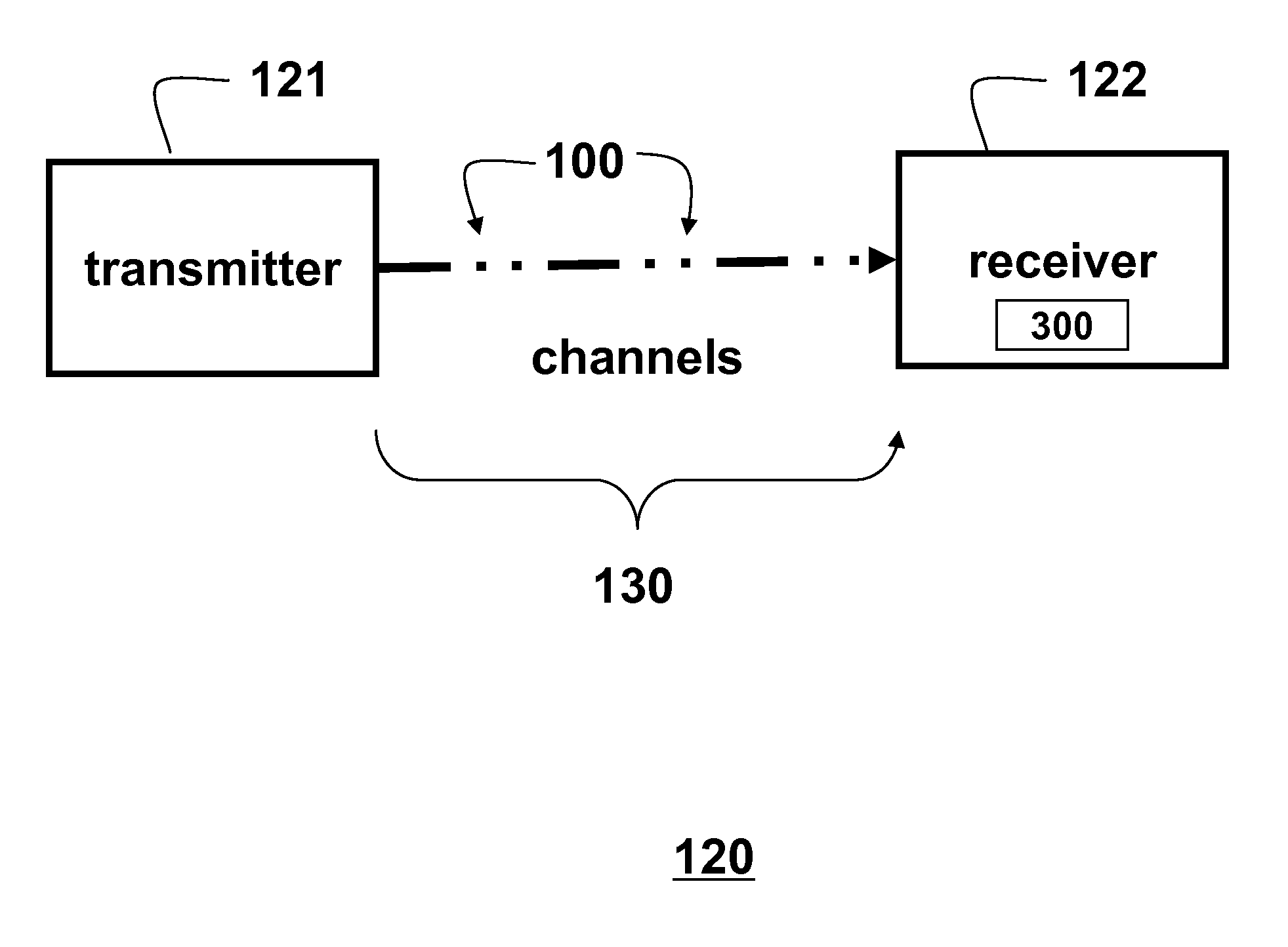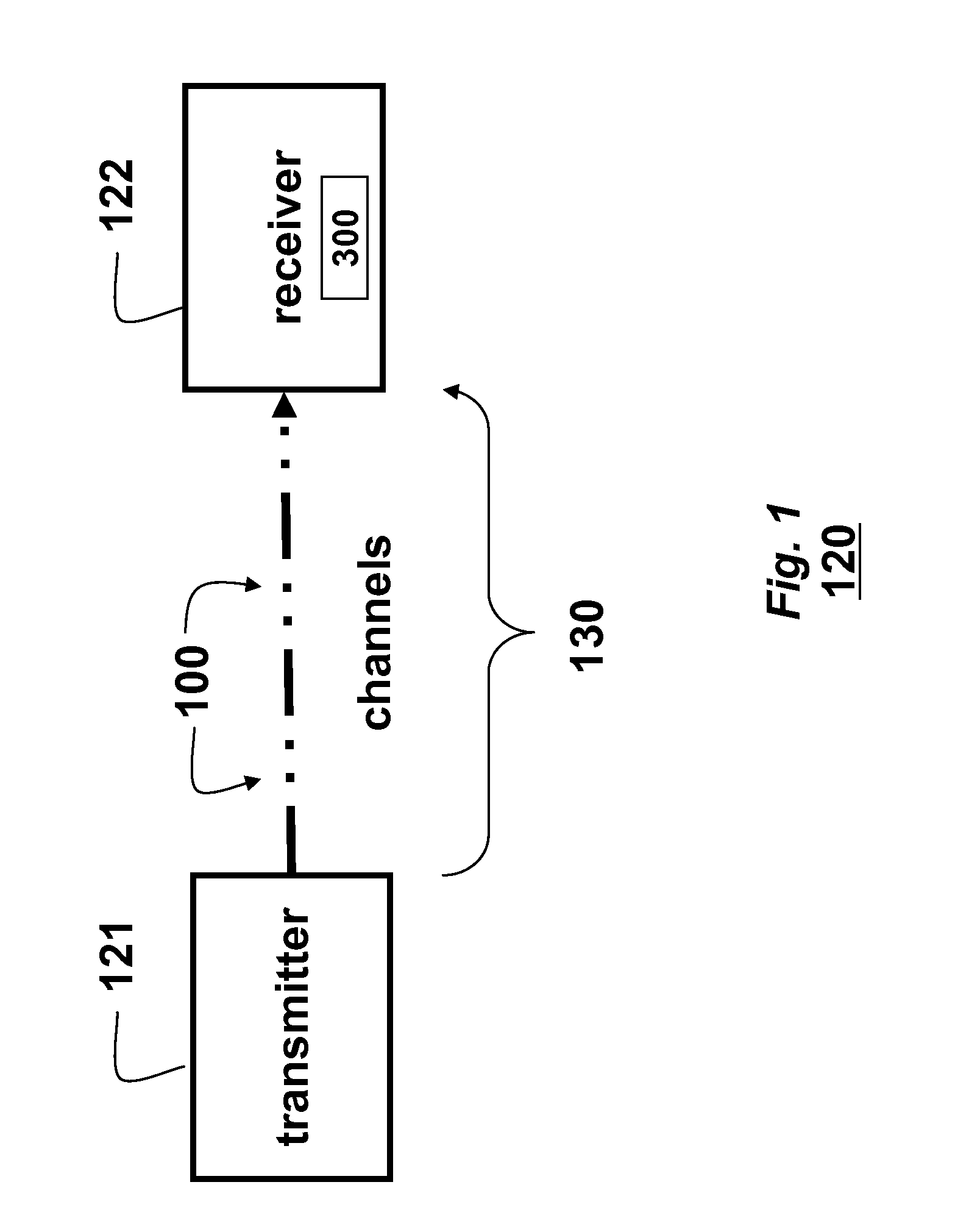Method for Estimating Time-Varying and Frequency-Selective Channels
a channel and time-varying technology, applied in the field of communication networks, can solve the problems of consuming bandwidth, reducing the effective data rate, and requiring a high computational complexity and additional processing delay, and achieve the effect of reducing the effective data ra
- Summary
- Abstract
- Description
- Claims
- Application Information
AI Technical Summary
Problems solved by technology
Method used
Image
Examples
Embodiment Construction
[0015]As shown in FIG. 1, the embodiments of our invention provide a method 300 for estimating channels 130 in a receiver 122 of an orthogonal frequency division multiplexing (OFDM) wireless communication network 120 using pilot tones 100. A transmitter 121 periodically transmits the pilot tones.
[0016]Random Pilot Tone Assignment
[0017]A shown in FIG. 2, a set of pilot tones 100 are inserted in frequency subcarriers 101 and time slots 102 of a orthogonal frequency division multiplexing (OFDM) symbol 200. The example symbol uses a set of ten time slots and eight frequencies in each OFDM symbol.
[0018]The number of pilot subcarriers in the set of pilot tones of a single OFDM symbol can depend on the number of non-zero (significant) delay paths in the channel 120. Based on the number of frequencies, the transmitter allocates the set of pilot tones uniformly and at random to the assigned frequencies. The number of pilot tones and their frequencies are predetermined and known at the receiv...
PUM
 Login to View More
Login to View More Abstract
Description
Claims
Application Information
 Login to View More
Login to View More - R&D
- Intellectual Property
- Life Sciences
- Materials
- Tech Scout
- Unparalleled Data Quality
- Higher Quality Content
- 60% Fewer Hallucinations
Browse by: Latest US Patents, China's latest patents, Technical Efficacy Thesaurus, Application Domain, Technology Topic, Popular Technical Reports.
© 2025 PatSnap. All rights reserved.Legal|Privacy policy|Modern Slavery Act Transparency Statement|Sitemap|About US| Contact US: help@patsnap.com



